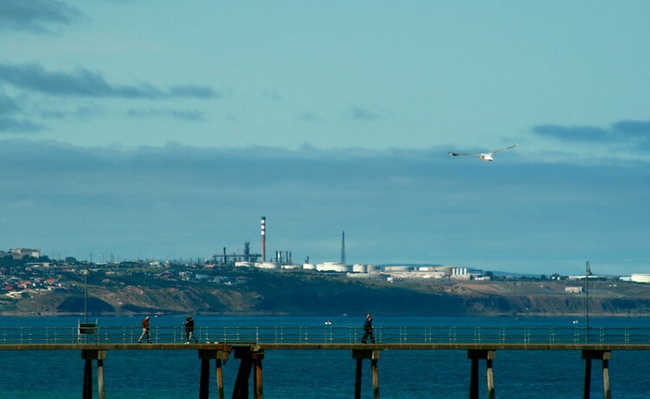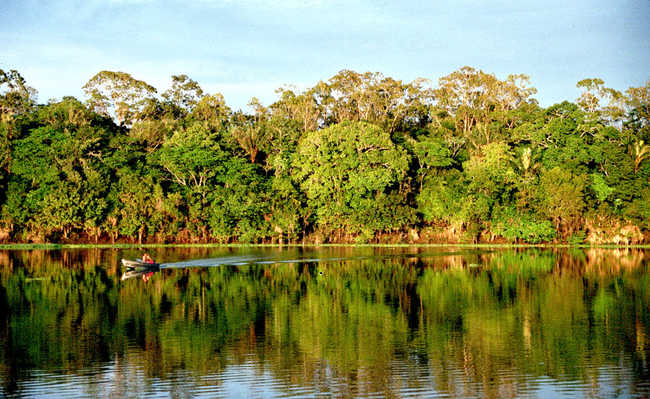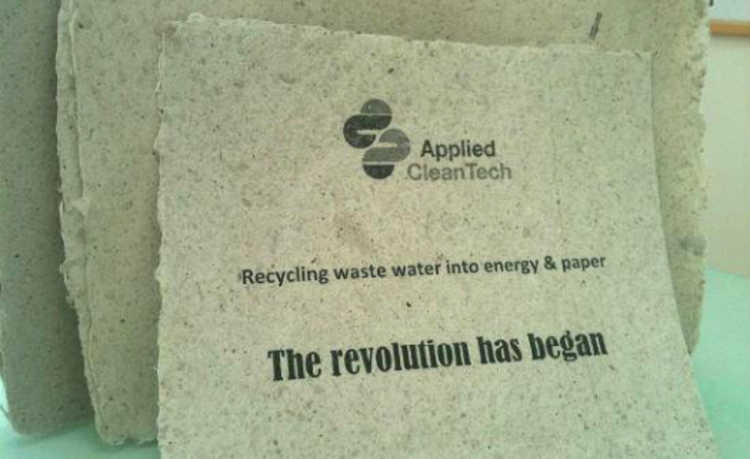Water desalination: from the sea to the glass
Understand how desalination is carried out, a technology that transforms sea water into drinking water and guarantees the supply of millions of people around the world

"MAG - Desalination Plant" (CC BY 2.0) by Melody Ayres-Griffiths
Desalination is a physical-chemical water treatment process that removes excess mineral salts, micro-organisms and other solid particles present in salt water and brackish water, in order to obtain drinking water for consumption.
Water desalination can be carried out using two conventional methods: thermal distillation or reverse osmosis. Thermal distillation seeks to mimic the natural cycle of rain. Using fossil or solar energy, the water in its liquid state is heated - the evaporation process transforms the water from a liquid to a gaseous state and solid particles are retained, while the water vapor is captured by the cooling system. When subjected to lower temperatures, water vapor condenses, returning to a liquid state.
Reverse osmosis, on the other hand, seeks to make the process contrary to the natural phenomenon of osmosis. In nature, osmosis is the displacement of a fluid through a semi-permeable membrane, from a less concentrated medium to a more concentrated one, seeking a balance between the two fluids. Reverse osmosis requires a pumping system capable of exerting pressure greater than that found in nature to overcome the natural flow direction. In this way, salty or brackish water, which is the most concentrated medium, moves towards the least concentrated. The semi-permeable membrane only allows the passage of liquids, retaining solid particles, enabling the desalination of sea water.
Applicability
The International Renewable Energy Agency (Irena) published in its report on desalination and renewable energy (Water Desalination Using Renewable Energy), that desalination is the biggest source of water to quench human thirst and irrigation in the Middle East, North Africa and some Caribbean islands. According to information available on the website of the International Desalination Association (IDA), more than 300 million people are supplied daily through desalination in the world.
There are at least 150 countries that use the desalination method for their regular supply, especially those in desert regions or those with supply difficulties, such as those in the Middle East and North Africa. One of the leaders in this technology is Israel, where about 80% of the drinking water consumed by the population comes from the sea.
The UN raises in its report on water and energy that desalination and the pumping of desalinated water brings improvements to certain regions, but points out the unfeasibility of this technology in poorer areas, especially for large-scale water use, such as in agriculture and in cases where the site is too far from the desalination plant. The main obstacle is that both the water desalination process and the pumping to a very distant region require a lot of energy to operate, making the method unsuitable for these situations.
Irena points out that, in addition to the high energy cost of the process, water desalination generally uses fossil energy as a source, which is not sustainable, has frequent price changes and is difficult to be transported. The organization also defends that as renewable energy sources become cheaper, these should be applied. The use of solar energy and the recovery of energy from wastewater are alternatives indicated by both the UN and Irena to reduce desalination costs. Other suitable energy sources would be wind and geothermal.
Another issue associated with desalination wastewater is the fact that it can negatively impact marine ecosystems when discharged directly into the ocean. O Pacific Institute, an independent research institute in California, USA, studied the impacts caused by water desalination in San Francisco and Monterey Bays, both in California.
According to the report Key Issues in Seawater Desalination in California: Marine Impacts, waste water has a salt concentration much higher than the natural concentration found in sea water, and presents residues that are toxic to some marine beings, such as chemical additives that are incorporated in the water treatment and heavy metals that are released from corrosive processes that occur inside the pipelines. In the case of units that use thermal distillation, there is still the additional problem that the waste water is at a much higher temperature than seawater.
Through the development of new technologies that reduce energy consumption and minimize environmental impacts, desalination could become an alternative for issues related to water scarcity around the world, contributing to an improvement in the quality of life of millions of people.










